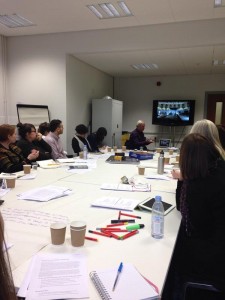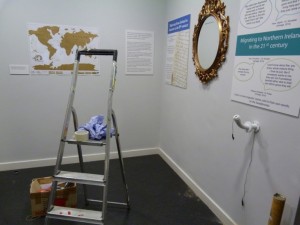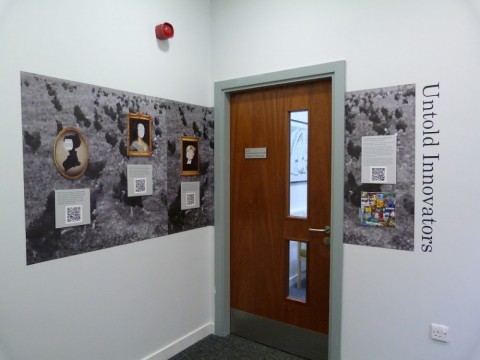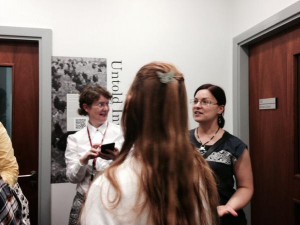Research In Translation
Research In Translation (https://researchintranslation.wordpress.com/) is an AHRC-funded endeavour intended to familiarise Early Career Researchers with the process of ‘translating’ their research into different media for dissemination across a wide variety of audiences with the ultimate goal of increasing the potential ‘impactfulness’ of that research. I was delighted to have been accepted to the programme for two reasons: 1.) impact is becoming an ever more important research consideration and must be incorporated into research design from initiation; and 2.) new skills are vital for career development. The opportunity to create a museum exhibit on a research topic of my own choosing (women and poultry husbandry in the Early Modern era) was also very attractive.
I attended a series of workshops with veteran museum professionals and designers, and was provided with a mentor who offered support and advice, and also served as a valuable sounding board throughout the course of Research In Translation. The first workshop took place at the Birmingham Museum and Art Galleries and focussed on exhibit curation and development.

Having managed museum collections (and having visited many museums), I had been under the impression that the process would be quite structured and follow an overarching narrative. This is the case, in essence, but a host of factors had never occurred to me: What is the reading level at which text labels should be written? What is a good font to use—and what size at which part of the panel? Where does one place panels so that someone in a wheelchair can view them? What colours are more and less readable? How long does it take to get items to display and who can you request them from? How do you make something abstract visually engaging? The response to any of these questions can vary depending upon the intended audience, the space that you are working in and the amount of time that you have to develop the exhibit. The second workshop, headed by Suzanne MacLeod, Director and Head of Museum Studies at Leicester, featured eminent designers Peter Higgins and Stephen Greenberg, and covered design methodology and design as interpretation.

The action really happened between the second workshop and the impending week of installation. Having negotiated the tension between the designers, my mentor and what I felt was fundamental to the research presented in the exhibit, I then designed, redesigned and submitted half a dozen different proposals (including text, narrative, images and scale drawings—with which I had a singular advantage!) which were altered with feedback from multiple experts and as my display was shifted to different spaces when other exhibits were altered and relocated by necessity.

Although the process was not without challenges, the skills that I learned throughout Research In Translation were truly beneficial. I am much more competent in the use of Photoshop and am more comfortable presenting research in a visual way. I have also gained an understanding of the overall process of creating, designing and installing an exhibit.

Primarily, I have learned that everything is fluid. Everything. You cannot make a plan and stick with it. It’s a bit like starting a new dig in an unfamiliar area or country. Very little is fixed due to the sheer number of factors involved. An object might not arrive. Consulting experts may have a serious disagreement. Works might happen in the area. Someone with a key piece of equipment, special skill, or license may not be available or turn up. Until the very last minute and even after installation, everything is up for debate and negotiation. In fact, midway through the installation, someone felt that an aspect of another participant’s exhibit was inappropriate for public display and for a time, her display title was censored with yellow sticky notes. Her title had been intentionally provocative, (and was slightly risky) but reflective of the core of her research. (The issue was eventually remedied through focussed diplomacy.)

Untold Innovators: the contributions of women to the poultry industry was launched on Thursday, the 18th of June at the School of Museum Studies at the University of Leicester. The website, which complements the exhibit and includes historical background as well as images of original documents, can be found here: https://untoldinnovators.wordpress.com/

Follow us
Keep up to date with the latest project news via our Twitter feed.
- — 5 years 8 months ago
- — 6 years 5 months ago
- — 6 years 6 months ago
- — 6 years 7 months ago

 ChickenCoop
ChickenCoop